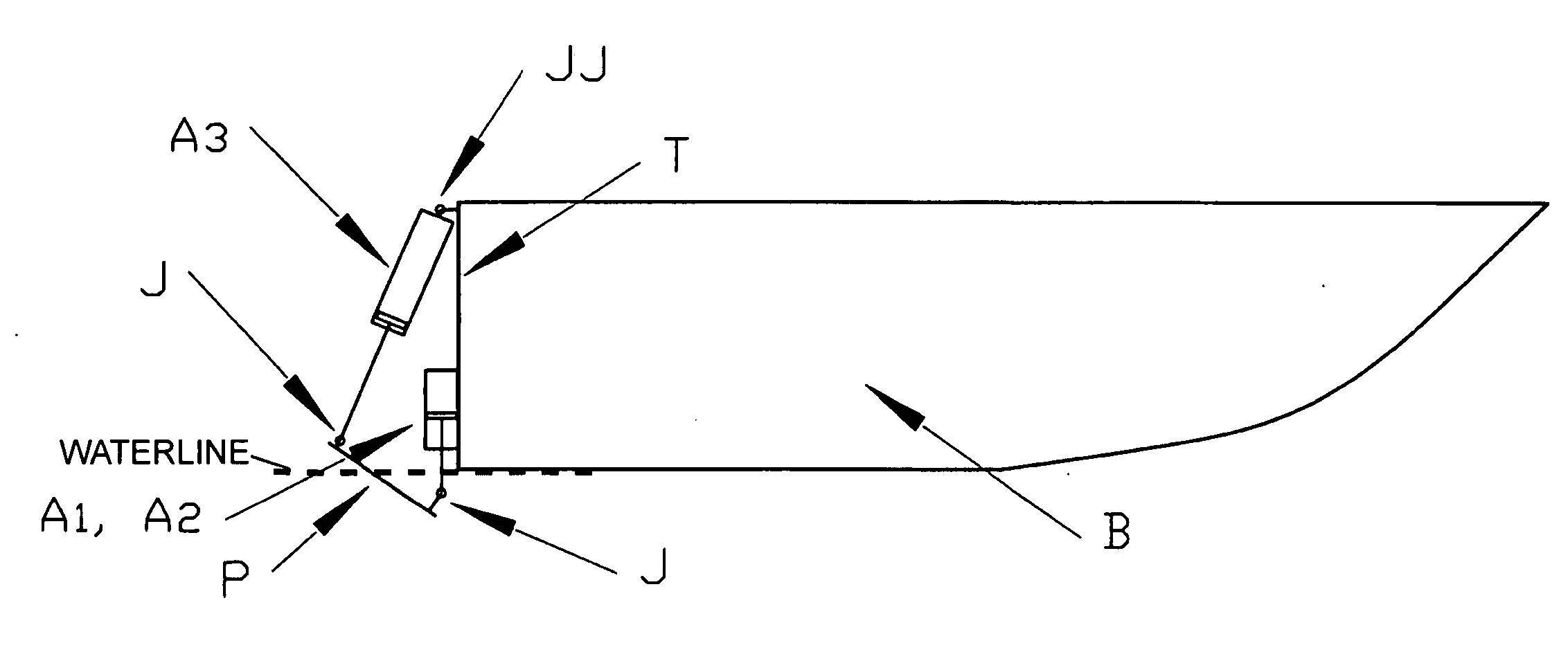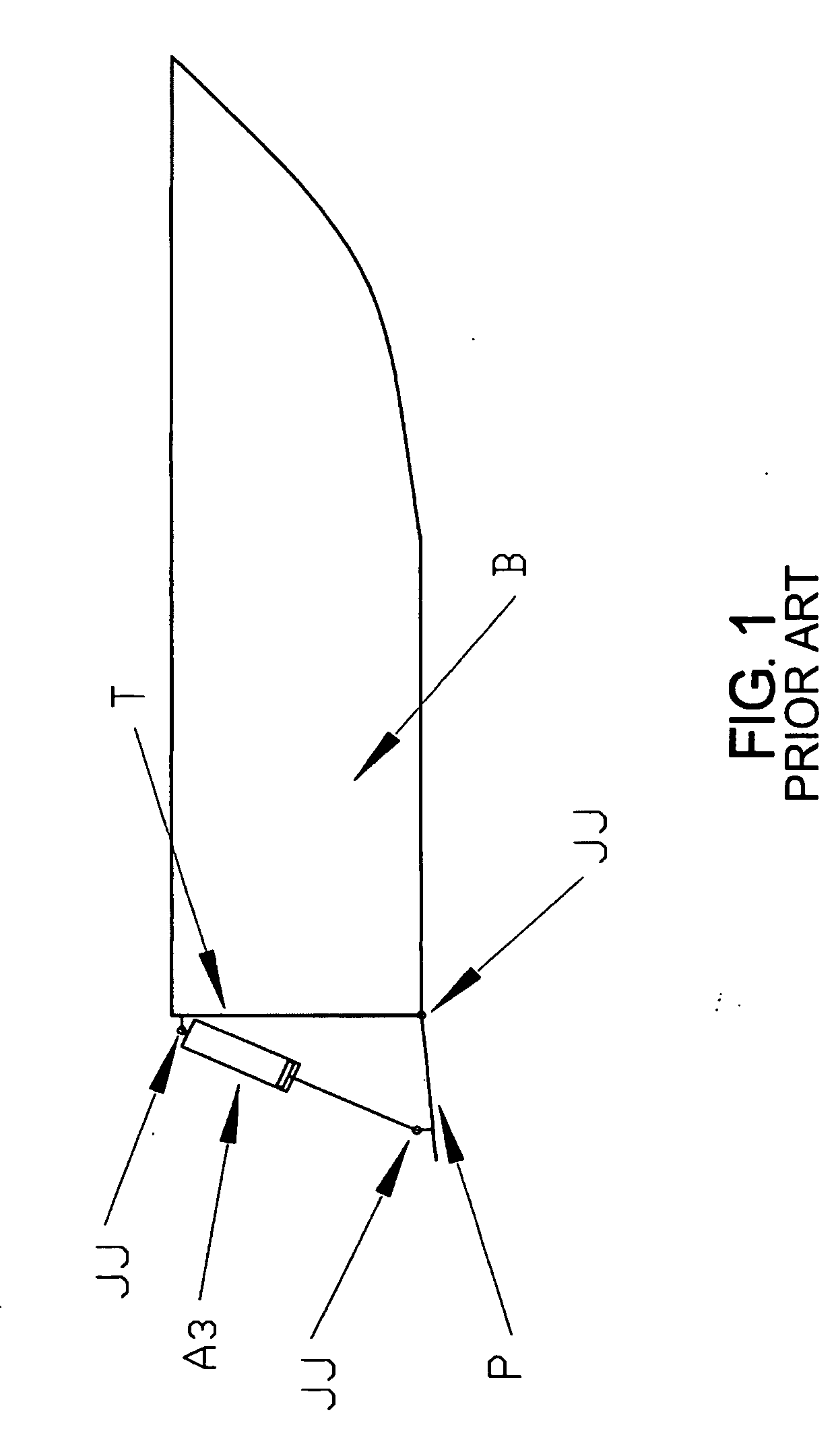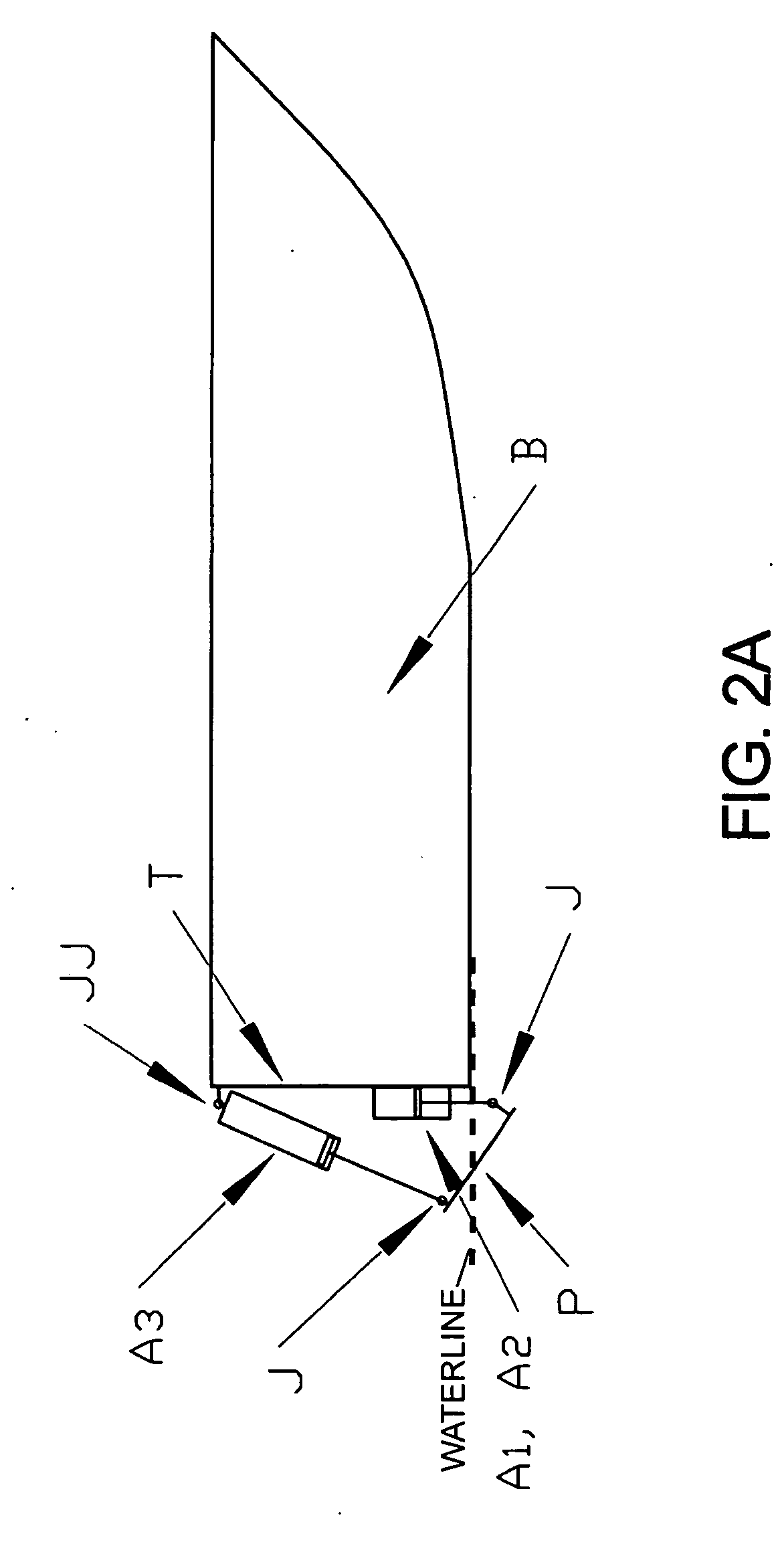Wake control mechanism
a control mechanism and wake technology, applied in the direction of special-purpose vessels, vessel construction, vessel movement reduction by foils, etc., can solve the problem of increasing the wake size by adding weight, and achieve the effect of lowering the boat rear, little weight, and rapid adjustmen
- Summary
- Abstract
- Description
- Claims
- Application Information
AI Technical Summary
Benefits of technology
Problems solved by technology
Method used
Image
Examples
Embodiment Construction
[0031] The preferred embodiment of the present invention is for boats that do not use an inboard-outboard or outboard engine and is depicted in FIG. 2A-FIG. 2D. The wake control plate “P” is connected to the transom “T” of the boat “B” by adjustable arms “A1”, “A2” and “A3”. Adjustable arms “A1” and “A2” are mounted rigidly on the Transom “T” and can only extend or contract vertically. “A1”, “A2” and “A3” are connected to wake control plate “P” with a non-rigid joint “J”, where a non-rigid joint is a connection that allows the arm 360 degrees of angular flexibility in one plane and up to approximately 20 degrees of angular flexibility in the direction perpendicular to that plane. (An example of a non-rigid joint that rotates 360 degrees in one direction and up to 20 in the other is the rubber gasket joint typically used on the bottom end of automobile shock absorbers). Non-rigid joints give the wake control plate the flexibility to tilt about any axis as the length of the adjustable...
PUM
 Login to View More
Login to View More Abstract
Description
Claims
Application Information
 Login to View More
Login to View More - R&D
- Intellectual Property
- Life Sciences
- Materials
- Tech Scout
- Unparalleled Data Quality
- Higher Quality Content
- 60% Fewer Hallucinations
Browse by: Latest US Patents, China's latest patents, Technical Efficacy Thesaurus, Application Domain, Technology Topic, Popular Technical Reports.
© 2025 PatSnap. All rights reserved.Legal|Privacy policy|Modern Slavery Act Transparency Statement|Sitemap|About US| Contact US: help@patsnap.com



